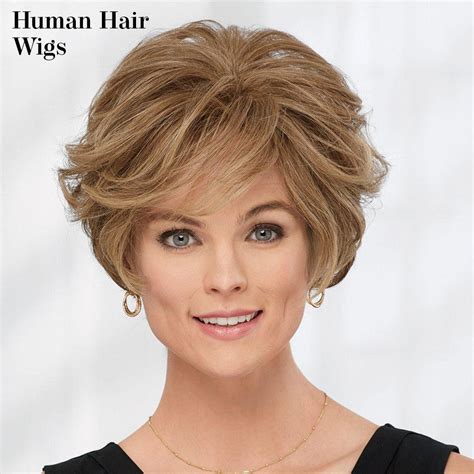Introduction
In the world of hairpieces, nothing beats the authentic look and feel of realistic hair wigs. These innovative hair solutions have revolutionized the industry, offering users an unparalleled level of naturalness and versatility. This comprehensive guide will delve into the intricate details of 3D realistic hair wigs, exploring their benefits, types, and the latest advancements in the field.

Benefits of Realistic Hair Wigs
- Natural Appearance: 3D realistic hair wigs mimic the texture, color, and movement of real hair, creating an illusion of natural growth from the scalp.
- Comfort: Made from lightweight and breathable materials, these wigs provide a comfortable and secure fit throughout the day.
- Versatility: Realistic hair wigs can be styled, cut, and colored like natural hair, allowing users to customize their look effortlessly.
- Confidence Boost: A flattering and natural-looking hairpiece can significantly boost self-esteem and confidence.
- Medical Applications: Realistic hair wigs play a crucial role in medical treatments such as chemotherapy, alopecia, and other hair loss conditions.
Types of Realistic Hair Wigs
1. Lace Wigs (Lace Front, Full Lace)
Lace wigs feature a thin, sheer lace base that matches the wearer’s skin tone. They offer the most realistic hairline and allow for versatile styling options.
2. Monofilament Wigs
Monofilament wigs have a lightweight and breathable base made of sheer mesh. They provide a natural scalp-like appearance and are ideal for those with sensitive scalps.
3. Synthetic Wigs
Synthetic wigs are made from artificial fibers. While less natural-looking than human hair wigs, they are affordable and require minimal maintenance.
4. Human Hair Wigs
Human hair wigs are crafted from real human hair, offering the closest resemblance to natural hair in terms of texture, feel, and appearance. However, they require more care and maintenance.
Advancements in Realistic Hair Wigs
- 3D Printing: Advanced 3D printing techniques have enabled the creation of custom-fit wigs with realistic hairlines and textures.
- Biomimetic Technology: Biomimetic technology mimics the structure and properties of human hair, resulting in wigs that behave and feel like natural hair.
- Heat-Resistant Fibers: Heat-resistant fibers allow users to style their wigs using heat tools without damaging the fibers.
Strategies for Choosing the Right Wig
- Determine Your Hair Type: Consider your natural hair texture, color, and desired length before selecting a wig.
- Measure Your Head: Use a measuring tape to determine your head circumference and cap size.
- Consider Your Lifestyle: Think about your daily activities and choose a wig that aligns with your lifestyle.
- Try on Different Wigs: Visit a wig salon and try on several wigs to find the best fit and style.
Common Mistakes to Avoid
- Choosing a Wig That’s Too Big or Small: An ill-fitting wig can appear unnatural and uncomfortable.
- Styling with Harsh Products: Avoid using heavy styling products or excessive heat on your wig, as this can damage the fibers.
- Overwashing: Wash your wig sparingly and use gentle shampoos and conditioners.
- Neglecting Maintenance: Regular maintenance, including detangling, brushing, and conditioning, is essential for keeping your wig in optimal condition.
Conclusion
Realistic hair wigs have become an indispensable tool for individuals seeking a natural and confidence-boosting hair solution. With advancements in technology and materials, the quality and versatility of these wigs continue to improve. By understanding the types, benefits, and strategies for choosing the right wig, you can unlock the transformative power of 3D realistic hairpieces. Embrace the beauty of natural-looking hair and experience the confidence that comes with it.
